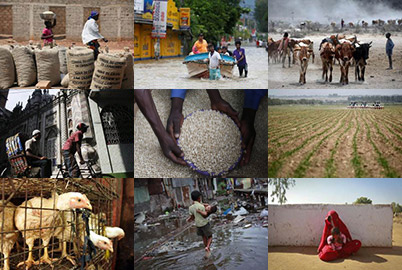Survivors are too afraid to sleep in their homes, fearing more aftershocks, aid workers say
BANGKOK (AlertNet) – Unseasonal rains coupled with bad roads and remote locations are hampering relief efforts four days after a strong earthquake hit eastern Myanmar on March 24, aid workers said.
The 6.8 magnitude tremor killed at least 74 people and injured another 125, when it shook the famous "Golden Triangle" region, a sparsely populated, hilly area where Myanmar, Thailand and Laos meet. The United Nations says there have been eight aftershocks and the risk of landslides is high.
“We have been unable to get to other villages yet. It’s been raining these days and the motorcycle cannot get to those places,” Nyi Soe, an aid worker from the Kengtung branch of aid agency Karuna Myanmar Social Services, told AlertNet on Monday. Kengtung is a town 35 miles (56 km) north of the epicentre.
The organisation has so far conducted assessments in 15 villages in the worst-affected area, near the border with Thailand.
“We’ve been going to these places on motorbikes because the roads cannot take heavy vehicles and cars. Yesterday we went to a village and had to leave the car behind,” he said.
Soe said survivors are too afraid to sleep in their homes, fearing more aftershocks.
“The people have put up little huts near their old houses because they do not dare to go back to their houses so we’re trying to set up two camps for about 150 people in two villages which will be rain-proof,” he told AlertNet.
Karuna’s Soe said private donors, aid organisations and authorities have provided survivors with essential food items.
“The only thing the community needs and requests is to make temporary shelter for them. That’s the important thing at the moment.”
The government says over 300 houses and buildings were destroyed by the shallow quake, which occurred just 6.2 miles (10 km) below the surface. The tremor was felt in the capital cities of Thailand and Myanmar and as far away as Vietnam, where people evacuated tall buildings.
In Myanmar, the towns of Tachileik and Tarlay and nearby villages – close to the epicentre and near the border with Thailand - are the worst-affected, the United Nations says.
Images show collapsed and damaged houses as well as a damaged bridge in Tachileik.
Repairs are being done to the bridge and, although it reopened on Saturday, it may not be adequate for heavy trucks, the United Nations said in its latest report.
A monk from a monastery in the Mong Lin (West) cluster of villages told AlertNet his village is waiting for more help to rebuild the houses.
“Our monastery was also affected, nothing was left,” he said over the phone.
“Maybe because we are a little bit out of the way we haven’t had any help to reconstruct our homes. So we are starting to do it all by ourselves within our own means.”
Our Standards: The Thomson Reuters Trust Principles.

